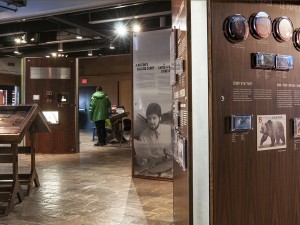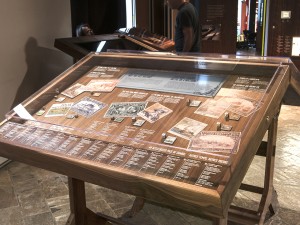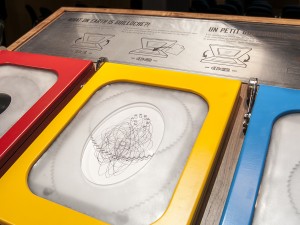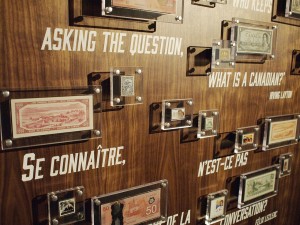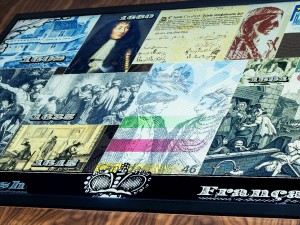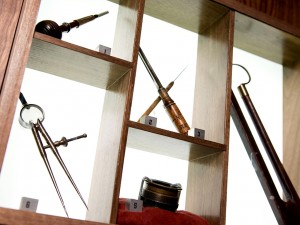Voices from the Engraver is launched!
Introductory panels, including a full printing plate of stamps and a sheet of $1000 bills.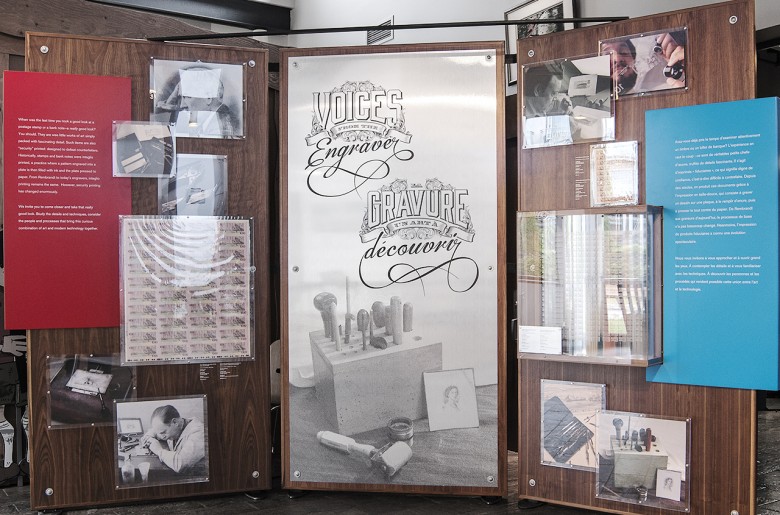
It’s was an exciting and anxious time: a sort of combination of Christmas morning and a doctor’s appointment. Our little team from the Museum stood in the education space of the Sherbrooke Nature and Science Museum on a chill November morning while the exhibition technicians assembled our finished exhibition. Yes, finished. It was the first time we’d seen the panels with artifacts attached, sat in the photo booth, tried the physical interactive or even seen how the exhibition zones related to one another. For months we’d been accustomed to seeing the exhibition as a white board scribble or a rendering on a computer monitor. To walk through the full-scale exhibition was at once surreal and giddily exciting.
Voices is comprised of 14 separate display units including interactives.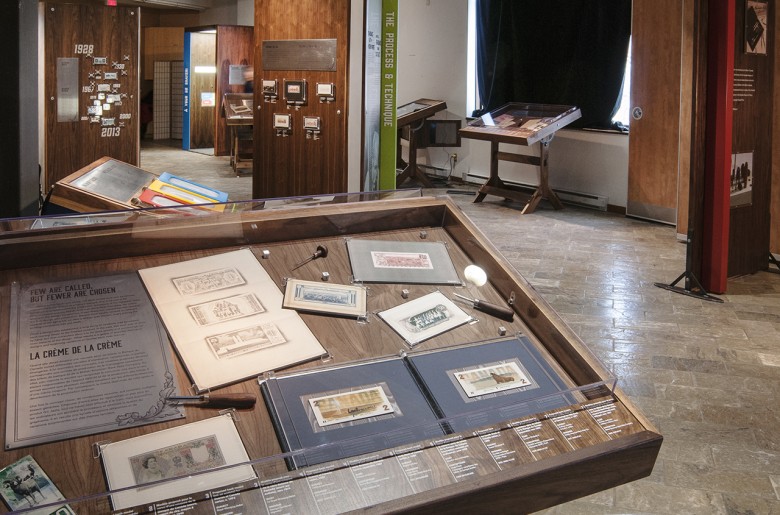
Prior to their first assembly, travelling exhibitions can harbour any number of nasty surprises that are just waiting to jump out and yell “Boo!”. Things just don’t always work as well in practice as they do in the imagination - that’s life. So when you see four exhibit builders standing in a circle scratching their chins and staring at a hinge assembly, you know something said “boo”. In the case of Voices from the Engraver, there was no such chin scratching. There were some expected minor glitches with the timeline touch screen and some adjustments needed to the way the panels fit together, but it was remarkably (dare I say, amazingly) trouble-free. We were so very pleased.
Visitors place their photos into a variety of changeable graphic features and colours to make their own stamps and bills.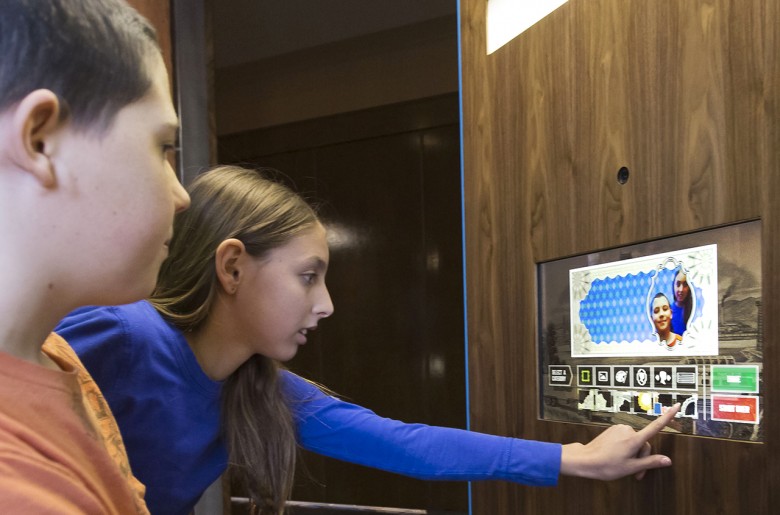
Part of making this exhibit as trouble-free as possible comes from the very traditional nature of the basic assembly. Not that there isn’t a lot of high technology, but it is all housed in frameworks that wouldn’t surprise any cabinet maker from the last century. Why use vacuum assisted, electromagnetic torque inducing titanium fasteners (OK, I made that up) when a simple wooden gate latch will do? Seriously, though, keeping things simple is a good practice in this business, especially when your exhibit is likely to be 2500 kilometres from the nearest titanium electromagnetic vacuum fastener supplier.
So, here it is. What do you think? We think it’s beautiful, but we’re a bit biased.
Where references were made to specific stamps, enlargements were printed to aid the viewing of such tiny artifacts.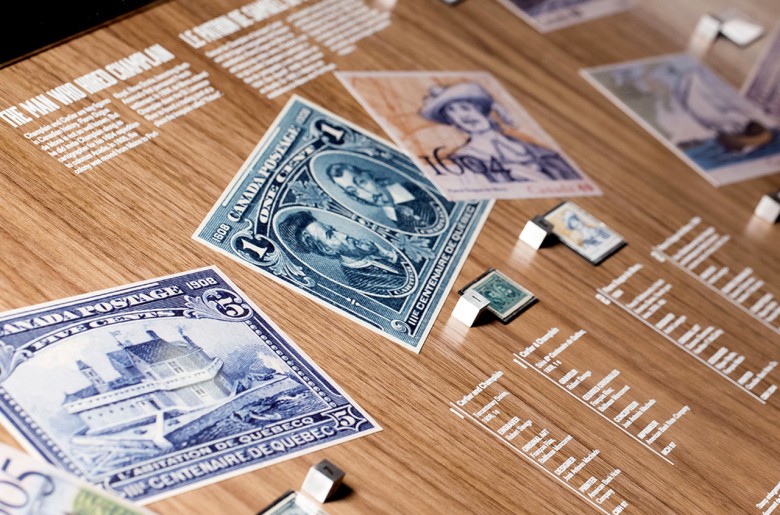
As of publication, Voices will be at its 3rd venue, the Galt Museum & Archives in Lethbridge, AB. Its second run was at the Musée régional de Kamouraska, north of Québec City, where it was set up without a hitch. Please see the travelling exhibitions page on this website for more info. Thanks to the exhibitions staff at the Sherbrooke Nature and Science Museum and, of course, our hard-working curatorial and exhibition teams.
The Museum Blog
Speculating on the piggy bank
By: Graham Iddon
New acquisitions—2024 edition
Money’s metaphors
Treaties, money and art
Rai: big money
By: Graham Iddon
Lessons from the Great Depression
By: Graham Iddon
Welcoming Newfoundland to Canada
By: David Bergeron
New Acquisitions—2023 Edition
Mo’ money, mo’ questions
Understanding cryptocurrencies
By: Graham Iddon
A checkup on cheques
By: David Bergeron
